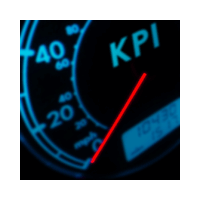 In any corporate sustainability project, whether it is reducing greenhouse gas emissions, paper use, or supply chain waste, choosing the right key performance indicators (KPIs) is a critical ingredient to success. At the Toronto conference on Environmental, Social and Governance (ESG) Issues hosted by the Canadian Institute of Chartered Accountants (CICA), Cathy Cobey from Ernst & Young talked about how to choose smarter KPIs.
In any corporate sustainability project, whether it is reducing greenhouse gas emissions, paper use, or supply chain waste, choosing the right key performance indicators (KPIs) is a critical ingredient to success. At the Toronto conference on Environmental, Social and Governance (ESG) Issues hosted by the Canadian Institute of Chartered Accountants (CICA), Cathy Cobey from Ernst & Young talked about how to choose smarter KPIs.
The inaugural edition of the annual CICA conference drew senior executives from Canada and around the world with notable speakers from Standard & Poor’s, Ontario Securities Commissions, Suncor Energy, Potash, TD bank, Deloitte, Ernst & Young, PricewaterhouseCoopers, KPMG, Torys, and Stikeman Elliott.
Among the more interesting presentations include how Standard & Poor’s incorporates climate change risks in their ratings, how TD bank evaluates the sustainability aspects of investment opportunities, how Deloitte applies their Risk Rating Matrix to help clients evaluate climate change risks. I plan to cover these sessions in future posts. Subscribe here if you would like to be notified.
One of the most insightful sessions was on choosing key performance indicators for corporate environmental and climate change initiatives. Cathy Cobey, Canadian Leader of Ernst & Young’s Climate Change and Sustainability Practice, shared her experience on how to choose the right KPIs. Here are the key points with my additional comments.
- Choose KPIs that are really key—Choose KPIs that will generate the biggest impact. Involve a wide range of people in the company to ensure big factors are not missed. Since you are unlikely to be able to focus on all KPIs, choose only two to three to focus on in each phase that are appropriate for the company’s sustainability maturity level.
- Choose KPIs that are measurable—KPIs must be measurable. But don’t be tempted to choose factors that are easy to measure. Choose what is key, then try your best to measure them.
- Choose KPIs that regularly change—Some KPIs are important and measurable, but may not change much in the short to medium term. Choose KPIs that regularly change to reflect short term progress and provide useful feedback.
- Consider industry specific KPIs—Generally, KPIs that are more industry specific are likely to be more useful. An automotive manufacturer may measure fuel efficiency. A consumer product company may measure supply chain carbon footprint. A mining company may measure the number of votes for or against environmental shareholder resolutions. Develop a good understanding of what is important to the company and its industry before selecting the KPIs.
- Choose only a few KPIs—Sustainability projects often have limited budgets. This forces you to choose fewer KPIs and focus on the few that are really key. Two to three KPIs at a time is a good rule of thumb.
- Choose KPIs that are meaningful to your stakeholders—Different KPIs speak differently to various groups of stakeholders. Choosing KPIs that resonate with your key stakeholders could help gain support for the project.
- Choose KPIs that connect to the core business strategies—Sustainability KPIs that connect with core business strategies have more synergy and could require less effort to implement. You may consider the CEO messages in company reports and web sites, then align sustainability KPIs with those messages where possible.
Do you have any experience with sustainability KPIs? Do any of the above points resonate with you? Are there other points you would like to add? Leave me with a comment below.




















